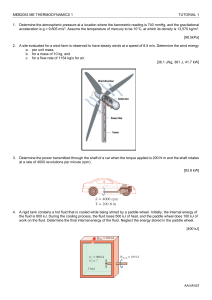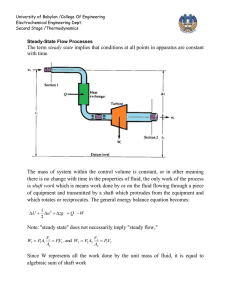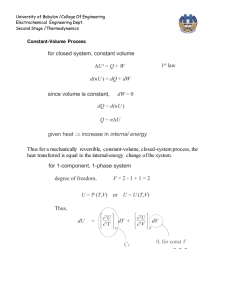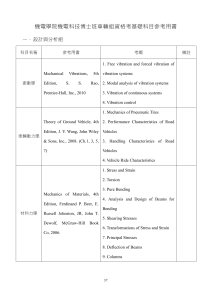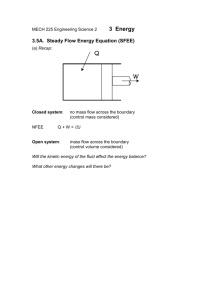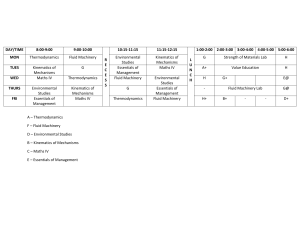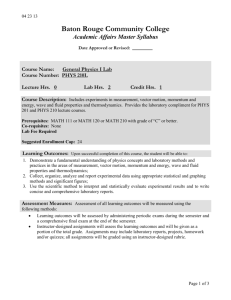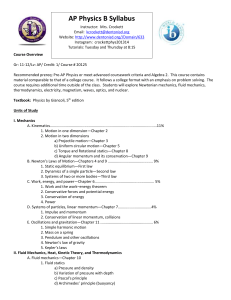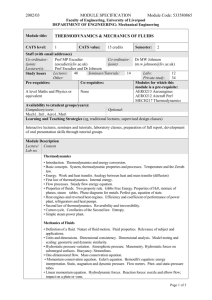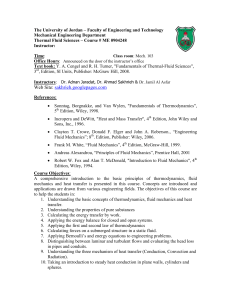Chapter 8: Revision of some fundamental concepts: The First Law of
advertisement
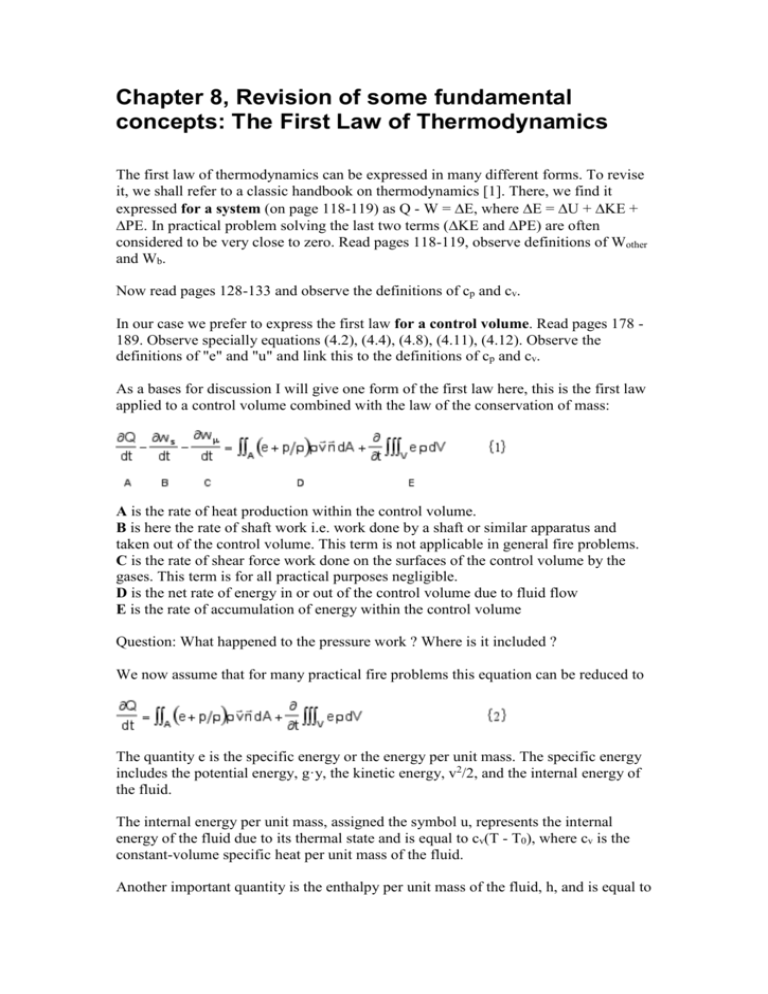
Chapter 8, Revision of some fundamental concepts: The First Law of Thermodynamics The first law of thermodynamics can be expressed in many different forms. To revise it, we shall refer to a classic handbook on thermodynamics [1]. There, we find it expressed for a system (on page 118-119) as Q - W = E, where E = U + KE + PE. In practical problem solving the last two terms (KE and PE) are often considered to be very close to zero. Read pages 118-119, observe definitions of Wother and Wb. Now read pages 128-133 and observe the definitions of cp and cv. In our case we prefer to express the first law for a control volume. Read pages 178 189. Observe specially equations (4.2), (4.4), (4.8), (4.11), (4.12). Observe the definitions of "e" and "u" and link this to the definitions of cp and cv. As a bases for discussion I will give one form of the first law here, this is the first law applied to a control volume combined with the law of the conservation of mass: A is the rate of heat production within the control volume. B is here the rate of shaft work i.e. work done by a shaft or similar apparatus and taken out of the control volume. This term is not applicable in general fire problems. C is the rate of shear force work done on the surfaces of the control volume by the gases. This term is for all practical purposes negligible. D is the net rate of energy in or out of the control volume due to fluid flow E is the rate of accumulation of energy within the control volume Question: What happened to the pressure work ? Where is it included ? We now assume that for many practical fire problems this equation can be reduced to The quantity e is the specific energy or the energy per unit mass. The specific energy includes the potential energy, g·y, the kinetic energy, v2/2, and the internal energy of the fluid. The internal energy per unit mass, assigned the symbol u, represents the internal energy of the fluid due to its thermal state and is equal to cv(T - T0), where cv is the constant-volume specific heat per unit mass of the fluid. Another important quantity is the enthalpy per unit mass of the fluid, h, and is equal to u + p/ or cv(T - T0) + p/ which in turn is equal to cp(T - T0). The quantity cp is the constant-pressure specific heat per mass of the fluid. An important relation between the constant-volume and the constant-pressure specific heats (for an ideal gas) is cp cv = R, the universal gas constant. [1] Cengel and Boles, "Thermodynamics, an Engineering Approach", McGraw-Hill, Inc., New York, 1994. Read pages 118 - 119, 128 - 133, 178 - 189.
